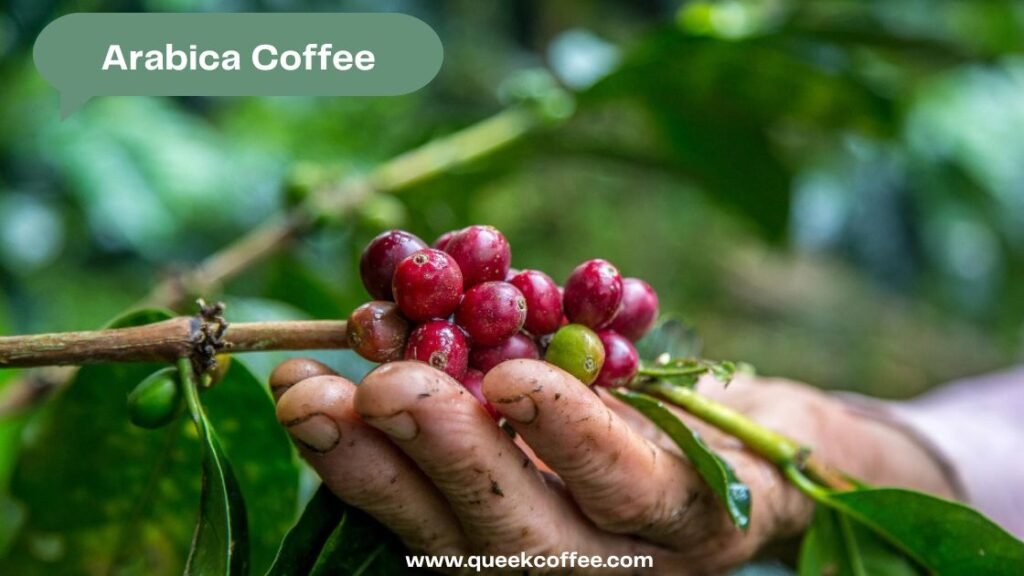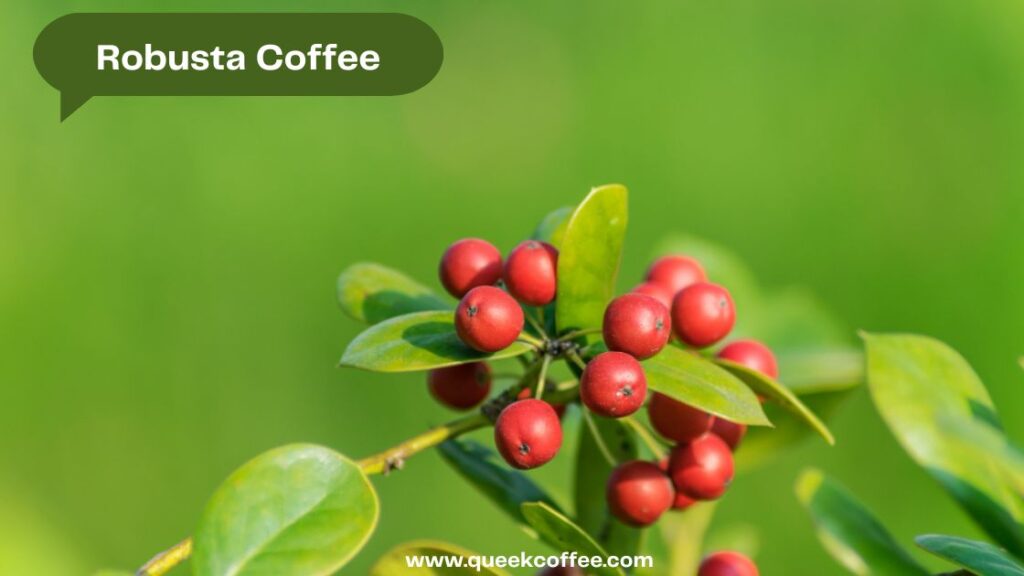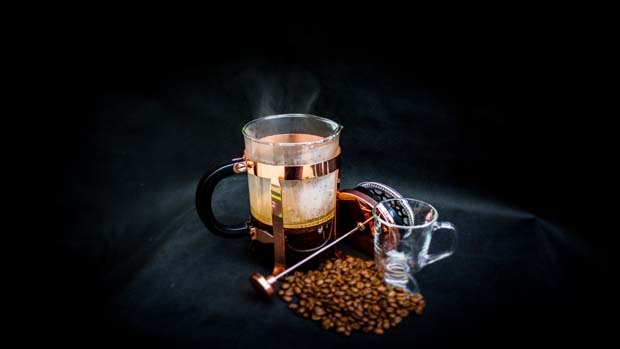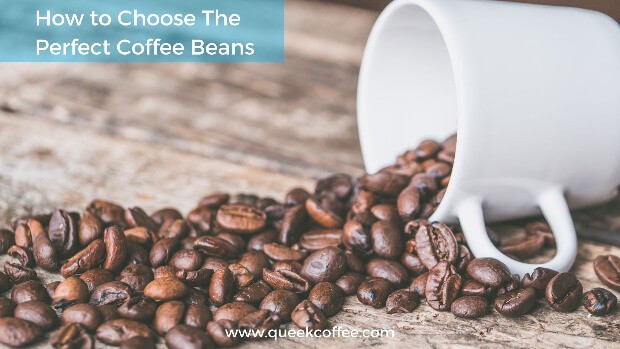Greetings, and welcome to the world of coffee! Whether you’re a seasoned coffee lover or a beginner, choosing the right coffee beans is crucial for brewing the perfect cup of joe. That’s why knowing how to choose coffee beans perfectly is important.
In this comprehensive guide, we’ll explore the key factors to keep in mind when choosing the right coffee beans that align with your taste preferences. So grab your favorite mug, and let’s dive in!
Understanding Coffee Beans
To begin the selection process, it is important to know the two main coffee bean types, Arabica and Robusta.
Arabica Beans

Arabica coffee beans are one of the most popular types of coffee beans in the world. They are known for their rich, smooth flavor and are often used in high-end coffee shops and restaurants.
Arabica coffee beans are grown in many different countries, including Brazil, Colombia, Ethiopia, and Kenya. They require a specific climate and altitude to grow properly, which is why they are often more expensive than other types of coffee beans.
Arabica beans are known for their delicate flavor profiles and are considered the gold standard in specialty coffee. These beans have a wide range of flavor notes, including fruity, floral, and chocolaty undertones.
Arabica beans are typically grown at higher altitudes, resulting in slower growth and increased complexity in taste. If you are looking for a high-quality cup of coffee, Arabica coffee beans are worth trying.
Robusta Beans

Robusta coffee beans are another popular type of coffee bean that is widely cultivated in many different countries. Unlike Arabica coffee beans, Robusta beans have a strong, bitter taste and higher caffeine content. They are also much easier to grow and are more resistant to disease, which makes them less expensive.
Robusta beans are commonly used in blends with Arabica beans to create a more balanced flavor profile. Some coffee lovers prefer the bold and earthy flavor of Robusta beans, while others find them too intense. Robusta beans are more robust in flavor and higher in caffeine content.
They are often used in espresso blends or instant coffee due to their bold and bitter taste. Robusta beans are hardier and easier to cultivate, making them more resistant to pests and diseases. However, they generally lack the complex flavors found in Arabica beans. Robusta coffee beans are a great choice for those who enjoy a stronger and more robust coffee experience.
Factors to Consider When Choosing Coffee Beans
Roast Level
The roast level of coffee beans significantly influences the flavor and aroma of your brewed coffee. There are generally four main roast levels:
Light Roast
Lightly roasted beans have a light brown color and a more acidic taste profile. This roast level allows the unique characteristics of the coffee’s origin to shine through, showcasing bright and vibrant flavors.
Medium Roast
Medium-roasted beans have a richer, more balanced flavor with slightly less acidity than light roasts. This roast level perfectly balances the coffee’s origin and roasting process, offering a well-rounded and versatile taste experience.
Dark Roast
Dark roasted beans have a shiny, oily surface and a bittersweet flavor profile. The longer roasting time brings out smoky and caramelized notes, resulting in a bold and full-bodied cup of coffee. Dark roasts are commonly used for espresso blends.
Specialty Roasts
Specialty roasts, such as blonde, cinnamon, or French roast, offer variations within the traditional roast levels. Each specialty roast presents unique flavor profiles, catering to individual preferences and adding diversity to your coffee selection.
Origin
The origin of coffee beans plays a significant role in determining the flavor and characteristics of your brew. Different regions worldwide produce distinct flavors due to variations in climate, soil composition, and cultivation practices.
Single-Origin Beans
Single-origin beans come from a specific country, region, or even a single farm. These beans provide a unique taste experience that reflects their origin’s terroir and processing methods. Exploring single-origin coffees allows you to appreciate the coffee world’s diverse flavors.
Blends
Coffee blends combine beans from different regions or even different types of beans. Blending allows roasters to create harmonious flavor profiles by balancing the strengths and weaknesses of various beans. Blends often aim for consistency in taste, providing a familiar and reliable coffee experience.
Processing Methods
After harvesting, coffee beans undergo various processing methods, affecting their flavor and characteristics. The three primary processing methods are:
Washed Process
The washed process involves removing the outer layers of the coffee cherry immediately after harvest. This method produces cleaner and brighter flavors, showcasing the bean’s unique characteristics.
Natural Process
In the natural process, coffee cherries are dried with the fruit intact before removing the pulp. This method produces sweeter, fruitier flavors with a heavier body and lower acidity.
Honey Process
The honey process is a hybrid method where the coffee cherries are partially removed before drying. The remaining fruit pulp creates a sticky, honey-like layer during drying, imparting a distinctive sweetness and complexity to the beans.
Freshness
Freshness is key to enjoying the full potential of your coffee beans. When exposed to air, roasted coffee beans undergo oxidation, gradually losing their flavor and aroma. To ensure optimal freshness, consider the following:
- Purchase whole beans: Whole bean coffee stays fresher longer since the protective oils inside the bean are preserved until you grind them.
- Check the roast date: Look for beans with a recent roast date. Aim for beans roasted within two to four weeks of your purchase.
- Store properly: Keep your coffee beans in an airtight container in a cool, dark place, away from moisture, heat, and light.
Grind Size
The grind size of your coffee beans is crucial in achieving the desired extraction during brewing. Different brewing methods require specific grind sizes to optimize flavor and extraction efficiency. Here are some common grind sizes:
- Coarse: Suitable for French press and cold brew methods.
- Medium: Ideal for drip coffee makers and pour-over methods.
- Fine: Used for espresso machines and Moka pots.
Final Thoughts
Finding the perfect coffee beans is a pleasurable and individualized process. By considering elements like the level of roasting, the origin, the processing techniques, the freshness, and the size of the grind, you can embark on a tasty adventure customized to your liking.
Remember that the coffee world is extensive, so don’t hesitate to try new varieties and test different brewing methods. With your newfound expertise, you can select the ideal coffee beans to enhance your daily coffee routine. Finding the perfect coffee beans is a delightful and personal experience.
You can make an informed decision by considering factors like roast level, origin, processing methods, freshness, and grind size. The world of coffee is vast, so don’t be afraid to try different varieties and brewing techniques to find the flavor that suits you best. With your newfound knowledge, you can choose the ideal coffee beans to enhance your daily coffee routine.
Frequently Asked Questions
What is the difference between Arabica and Robusta beans?
Arabica beans are known for their delicate flavors, while Robusta beans have a bold and bitter taste with higher caffeine content.
How does roast level affect the flavor of coffee beans?
The roast level determines the taste of coffee, with lighter roasts having brighter flavors and darker roasts offering bold and smoky profiles.
Should I choose single-origin beans or blends?
Single-origin beans showcase unique flavors from a specific region, while blends offer a balanced and consistent taste experience.
How can I ensure the freshness of my coffee beans?
Purchase whole beans, check the roast date, and store them in an airtight container in a cool, dark place to maintain freshness.
What grind size should I use for different brewing methods?
A coarse grind for French press, a medium grind for drip coffee, and a fine grind for espresso machines ensure optimal extraction and flavor.

Dr. Maksud Hassan is a medical doctor by profession and the co-founder of www.queekcoffee.com. He is a coffee lover, and he loves to advise people about the health benefits of coffee.





